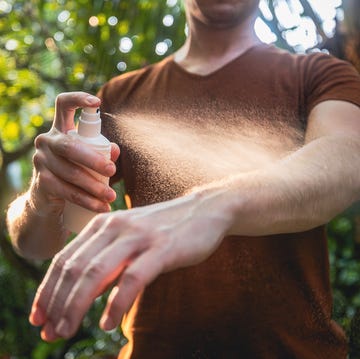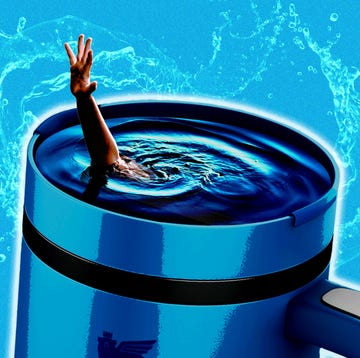Picture yourself with your very own backyard pool. There you are, drifting on an inflatable raft, sipping a cold beer, wiping urine from your eyes . . .
Wait, what now?
(Women’s Health originally published this story.)
Sometimes ignorance is bliss when it comes the germs you’re being exposed to on the regular—otherwise, how would you leave the house? But the Centers for Disease Control (CDC) would prefer you actually learned something about these issues. (If you want to dodge injuries and infections, here are The Worst Places to Stick Your Fingers.)
The CDC has teamed up with the Water Quality and Health Council and the National Swimming Pool Foundation for their annual Healthy Swimming Program. They’re seeking to educate Americans about the many possible dangers of pools and what you can do to keep your swim as clean and healthy as possible.
“We think that swimming is a really fantastic activity,” says Michael J. Beach, Ph.D., associate director of the CDC’s Healthy Water program. “We want to keep it that way.”
RELATED: 5 Ways to Steer Clear of Germs in Gym Locker Rooms
So what horrifying info would the CDC like to share with you? For starters, it turns out that your red eyes after swimming aren’t coming from an irritation to the chlorine.
“It’s quite the opposite,” says Beach. “Chlorine binds with all the things it’s trying to kill from your bodies, and it forms these chemical irritants. That’s what’s stinging your eyes. It’s the chlorine binding to the urine and the sweat.”
He gives another example of what can happen to you when chlorine binds to urine and sweat in a pool: that cough you get from an indoor pool. The trapped chemical reaction is what irritates your lungs.
And if you think that there are safeguards in pools to shame those sneaky urinators (like dye that's supposed to make pool water change color if someone pees), not so much.
“That dye is a complete myth,” says Beach. “It’s about scaring people into not urinating in the pool.”
(If this article hasn't scared you away from the pool yet, here are 4 Reasons Your Next Workout Should Be a Swim.)
But that’s not all. Beach explains that there’s been an increase in the number of disease outbreaks at public swimming pools, thanks to adults, children, or babies swimming while they have diarrhea.
And yes, it’s much more pervasive than it used to be.
“We have a new parasitic germ that has emerged that’s immune to chlorine,” says Beach. “We’ve got to keep it out of the pool in the first place. We need additional barriers.”
You can’t just blame those diapered toddlers in the shallow end, though. A person doesn’t have to literally defecate in a pool to spread illness—they could just have the germs on their bodies, which is why you’re always encouraged to shower off before you get into a pool.
One ailing person might not be enough to do it, but “if you’re talking about thousands of people using the same pool, those germs can really add up,” says Beach.
RELATED: How to Avoid a Summer Cold
Blessedly, there are ways to help avoid any of this nastiness. Don't go in pools when you’re sick (to protect others) or have open wounds (to protect yourself).
Never ever ever pee in a pool.
And don’t think that lakes or oceans are any safer. Yes, they can be vast, giving you the impression that your tiny germs will just be washed away. But: “If you’re swimming next to someone who has diarrhea, there’s no protection,” says Beach.
In fact, there was recently a large norovirus outbreak at a lake in Oregon, says Beach—and according to a CDC investigation, health experts suspect that the outbreak began when someone infected with the norovirus swam in (and had diarrhea or vomited in) the lake.
Keep it clean, and enjoy yourself out there—assuming you are capable of going to a pool ever again after reading this.













